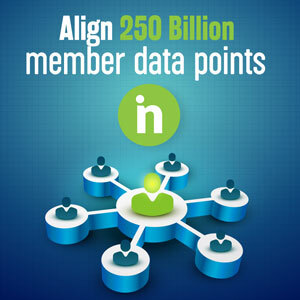Step 2- Defining the member journey by meeting healthcare members where they are
This is the second part of our series entitled “3-Step Guide to the Member Experience of Tomorrow.” See part one of the series here. Check back soon to read the last part of the series on our blog!
The “build it and they will come” mentality simply doesn’t apply in today’s era of evolving consumer healthcare needs and expectations. It takes more than creating services and features— members need to be aware of, want, and be able to use those services. They have real problems to solve and real barriers that prevent them from taking advantage of available solutions.
Boosting healthcare member engagement is all about meeting the member wherever they are in their journey. To create optimal healthcare member experiences, you must be the navigator and build the member experience you would want if you were the consumer.
Here are some simple steps to follow today to improve the healthcare member journey that also enable future innovation:
1. Define the expected or anticipated member journey
Every member journey follows a unique path. Healthy Harold only visits his doctor (the one he’s been seeing for 30+ years) once a year for a checkup. Newcomer Nancy just moved to town and needs to find a new specialist for an existing condition. And Confused Carol might not know where to go for care when a new concern arises.
You can leverage healthcare intelligence to move away from the one-size-fits-none approach in favor of more impactful solutions. That might include presenting members with names of providers in their area or making recommendations for preventative care, for example.
2. Develop a strong onboarding experience.
When new members join your health plan, you have a golden opportunity to set the scene for what their member experience will be. If you don’t take this opportunity, the first encounter a member might have with you is when they get a bill or when they have a question. If you’re not attentive to their needs from the beginning, you risk losing that member at that very first encounter.
Think about how you can improve and personalize your onboarding experience for each member and give them what they want in a high-quality, efficient way.
3. Coordinate and control messages so members aren’t overwhelmed.
Consumers are inundated with messages from companies all the time. Important messages can easily get lost in the jumble if they are ill-timed, irrelevant, or not helpful to the member.
Creating a better messaging strategy means not only controlling the number of messages shared, but also the quality of each message. Be selective about the information you share. Ensure it’s relevant and helpful. Personalize the message according to where the member is in the member journey. Doing so helps you to build and maintain trust with members as you demonstrate your understanding of their real and immediate needs.
4. Join the data to drive activity through the next action.
Organizations can learn a lot from healthcare data, but data is no substitute for putting yourself in the members’ shoes. Join the experience to understand what the experience is actually like. What works well? What doesn’t work? Pair your findings with member data to drive greater healthcare member engagement.
Engaging the community is better accomplished with a deep and thorough understanding of the member journey. Let’s discuss your market insights and how you can leverage healthcare intelligence to drive better outcomes. Contact us today!







